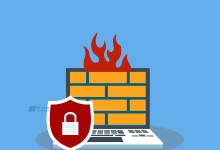Linux操作面板介绍
Linux操作面板是一种基于Linux操作系统的管理工具,用于通过Web界面进行服务器管理和配置。与其他操作面板相比,Linux操作面板提供更加灵活和可定制的选项,使管理员可以更好地控制服务器。此外,Linux操作面板还提供了许多强大的功能,如安装和升级软件包、查看系统日志和监控服务器性能等。
主要特点
Linux操作面板具有以下主要特点:
可定制的用户界面
易于安装和使用
支持多种语言和主题
强大的管理功能
兼容多种操作系统和Web服务器
Linux操作面板允许管理员使用Web浏览器访问它们的服务器,并通过直观的图形界面来管理各种服务器操作。该操作面板通常适用于CentOS、debian和ubuntu等Linux发行版。
功能和用途
Linux操作面板主要用于以下方面:
Web服务器管理:Linux操作面板可用于安装和管理Apache、Nginx、Lighttpd等Web服务器。
数据库管理:Linux操作面板支持MySQL、PostgreSQL、MongoDB等数据库服务器的管理。
DNS管理:Linux操作面板可用于设置和管理DNS服务器。
Email管理:Linux操作面板提供基本的邮件服务器管理功能,例如设置邮件别名和转发规则等。
FTP服务器管理:Linux操作面板可以安装和配置FTP服务器,为用户提供文件传输服务。
此外,Linux操作面板还支持安全管理功能,例如SSL证书管理、网络防火墙和入侵检测等。
优点和劣势
Linux操作面板具有以下优点和劣势:
优点
开源:Linux操作面板是开源软件,没有许可证费用。
易于安装和使用:Linux操作面板提供快速易用的图形界面,使得管理员可以轻松管理服务器。
基于Web:管理员可以通过Web浏览器远程访问和管理服务器。
强大的功能:Linux操作面板提供了各种功能,如软件包管理、日志查看和性能监控等。
劣势
安全性:如果不正确地配置,则Linux操作面板可能会导致服务器的安全漏洞。
资源消耗:某些Linux操作面板可能会使用大量的系统资源。
错误配置:如果管理员不了解Linux操作面板,则可能会导致错误配置和数据丢失。
结论
总的来说,在选择Linux操作面板之前,管理员应该考虑到他们的安全需求、预算和技能水平。对于有经验的管理员,Linux命令行操作可能更适合他们。但对于那些不熟悉Linux的管理员,Linux操作面板是一种易于安装、易于使用且功能强大的管理选项。
Introduction to Linux Control Panels
A Linux control panel is a management tool based on the Linux operating system, used for server management and configuration through a web interface. Compared to other control panels, Linux control panels offer more flexible and customizable options, allowing administrators to have better control over their servers. Additionally, Linux control panels provide many powerful features, such as installing and upgrading software packages, viewing system logs, and monitoring server performance.
Main Features
The main features of a Linux control panel include:
Customizable user interface
Easy to install and use
Supports multiple languages and themes
Powerful management features
Compatible with multiple operating systems and web servers
A Linux control panel allows administrators to access their servers using a web browser and manage various server operations through an intuitive graphical interface. The control panel is typically available for Linux distributions such as CentOS, Debian, and Ubuntu.
Functionality and Uses
A Linux control panel is primarily used for the following:
Web server management: A Linux control panel can be used to install and manage web servers such as Apache, Nginx, and Lighttpd.
Database management: A Linux control panel supports the management of database servers such as MySQL, PostgreSQL, and MongoDB.
DNS management: A Linux control panel can be used to configure and manage DNS servers.
Email management: A Linux control panel provides basic email server management functionality such as setting up email aliases and forwarding rules.
FTP server management: A Linux control panel can install and configure FTP servers, providing users with file transfer services.
Additionally, a Linux control panel also supports security management features such as SSL certificate management, network firewall, and intrusion detection.
Advantages and Disadvantages
A Linux control panel has the following advantages and disadvantages:
Advantages
Open source: A Linux control panel is open source software and does not have any licensing fees.
Easy to install and use: A Linux control panel provides a quick and easy-to-use graphical interface, allowing administrators to easily manage servers.
Web-based: Administrators can remotely access and manage servers through a web browser.
Powerful functionality: A Linux control panel provides various features such as package management, log viewing, and performance monitoring.
Disadvantages
Security: Improperly configured Linux control panels can lead to server security vulnerabilities.
Resource consumption: Some Linux control panels may consume a lot of system resources.
Misconfiguration: Inexperienced administrators may result in misconfiguration and data loss.
Conclusion
Overall, when selecting a Linux control panel, administrators should consider their security needs, budget, and skill level. Linux command-line operations may be more suitable for experienced administrators. However, for those who are not familiar with Linux, a Linux control panel is a straightforward and powerful management option that is easy to install, easy to use, and feature-rich.

 国外主机测评 - 国外VPS,国外服务器,国外云服务器,测评及优惠码
国外主机测评 - 国外VPS,国外服务器,国外云服务器,测评及优惠码














